2.1 — Oligopoly & Cartels
ECON 316 • Game Theory • Fall 2021
Ryan Safner
Assistant Professor of Economics
safner@hood.edu
ryansafner/gameF21
gameF21.classes.ryansafner.com
Discrete vs. Continuous Strategies
We considered simultaneous games where strategies are discrete: a finite (usually small) number of strategies to choose from
We now consider continuous strategies:
- Practically infinite number of "strategies" to choose from
- Example: firms don't just choose 1 out of 2 or 3 possible prices, but one from a large possible range
- Must switch from game trees and payoff matrices to algebraic equations
- Still keep concepts of "best response" and Nash equilibria

Quick Microeconomics Refresher
Demand Function
- Demand function relates quantity to price
Example: $$q=10-0.5p$$
- Not graphable (wrong axes)!
Inverse Demand Function
- Inverse demand function relates price to quantity
- Take demand function and solve for \(p\)
Example: $$p=20-2q$$
- Graphable (price on vertical axis)!
Inverse Demand Function
- Inverse demand function relates price to quantity
- Take demand function and solve for \(p\)
Example: $$p=20-q$$
- Graphable (price on vertical axis)!

Demand and Marginal Revenue

$$\begin{align*} \color{#0047AB}{p(q)}&\color{#0047AB}{=a-bq}\\ \color{#6A5ACD}{MR(q)}&\color{#6A5ACD}{=a-2bq}\\ \end{align*}$$
- Marginal revenue starts at same intercept as Demand \((a)\) with twice the slope \((2b)\)
Perfectly Competitive Firms


Firms in a competitive market are “price-takers” and must charge the market price
Demand for a firm's product is perfectly elastic at the market price
- Marginal revenue = Firm's Demand = market price
Perfectly Competitive Firms


- Firms choose \(q^\star\) to maximize profits where MR(q)=MC(q)
- In the long run, firms earn profit \(\pi=0\) due to free entry and exit
Firm with Market Power
Firm with market power is a price searcher
Chooses \(q^\star\) to maximize profits where MR(q)=MC(q)
Marks up price (above MC) to consumers' max WTP (Demand)
Profit = (p — AC(q))q
Earns positive profits from barriers to entry

Imperfect Competition

Application: The Econoomics of Oligopoly
Oligopoly

Oligopoly: industry with a few large sellers with market power
Other features can vary
- May sell similar or different goods
- May have barriers to entry
Key: Firms make strategic choices, interdependent on one another
For modeling simplicity:
- Duopoly: a market with 2 sellers
Oligopoly: Modeling
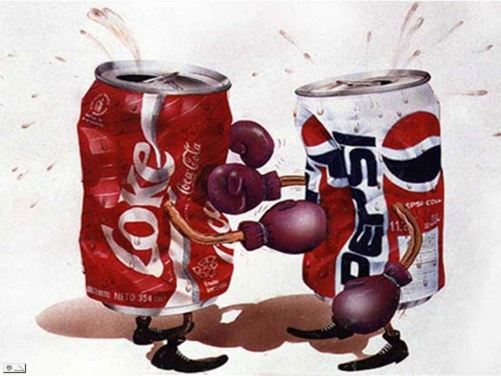
Unlike perfect competition or monopoly, no single “theory of oligopoly”
Depends heavily on assumptions made about interactions and choice variables:
- “Bertrand competition”: firms compete on price
- “Cournot competition”" firms simultaneously compete on quantity
- “Stackelberg competition”: firms sequentially compete on quantity
One certainty: oligopoly is a strategic interaction between few firms
Equilibrium in Oligopoly

What does “equilibrium” mean in an oligopoly?
In competition or monopoly, a unique \((q^*,p^*)\) for industry such that nobody has incentives to change price
Equilibrium in Oligopoly
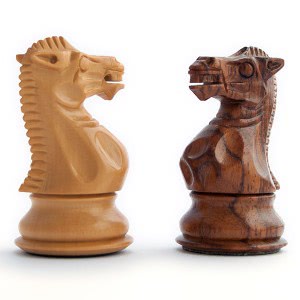
- Oligopoly: use game-theoretic Nash Equilibrium:
- no player wants to change their strategy given all other players’ strategies
- each player is playing a best response against other players’ strategies
As a Prisoner's Dilemma I
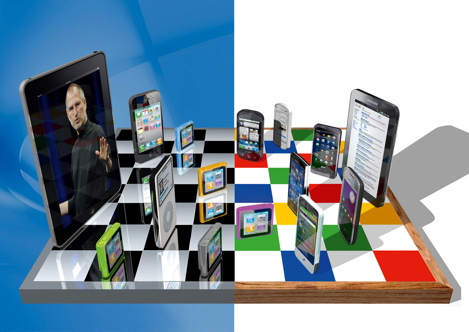
We will start with a discrete example to get the basics
Example: suppose we have a simple duopoly between Apple and Google
Each is planning to launch a new tablet, and choose to sell it at a High Price or a Low Price
As a Prisoner's Dilemma
- Nash equilibrium: (Low Price, Low Price)
- neither player has an incentive to change price, given the other's price
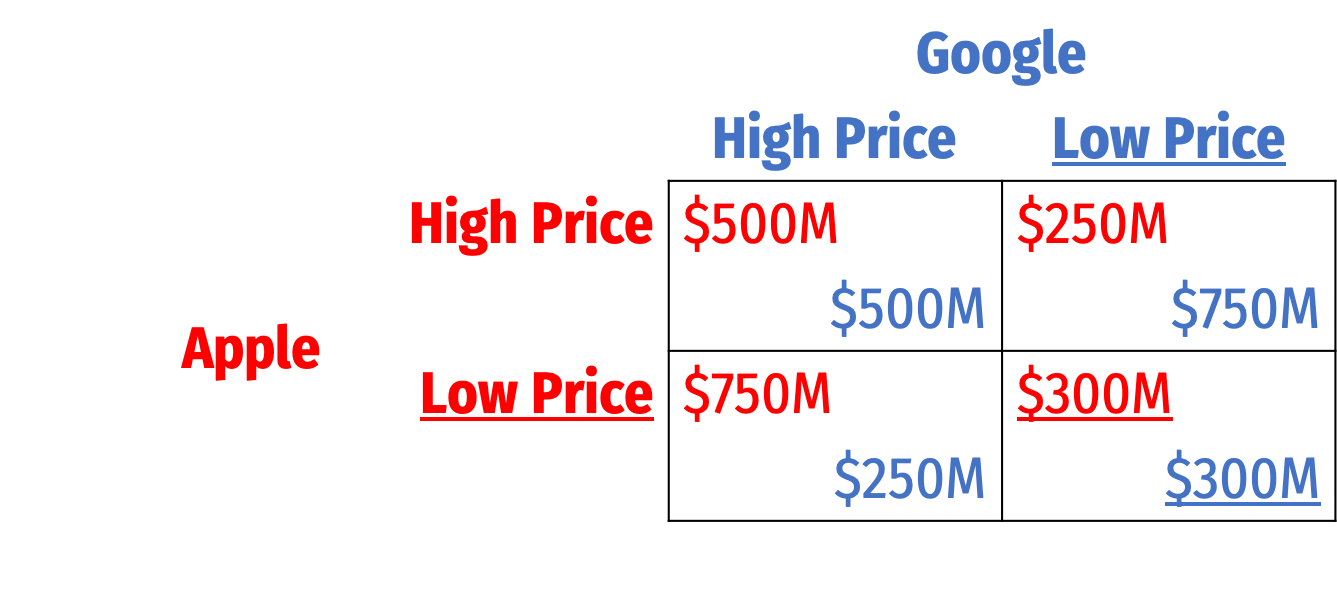
Nash equilibrium
As a Prisoner's Dilemma
Nash equilibrium: (Low Price, Low Price)
- neither player has an incentive to change price, given the other's price
A possible Pareto improvement: (High Price, High Price)
- Both players are better off, nobody worse off!
- Is it a Nash Equilibrium?

Cartels
As a Prisoner's Dilemma III
Google and Apple could collude with one another and agree to both raise prices
Cartel: group of sellers coordinate to raise prices to act like a collective monopoly and split the profits

Instability of Cartels
Cartels often unstable:
Incentive for each member to cheat is too strong
Entrants (non-cartel members) can threaten lower prices
Difficult to monitor whether firms are upholding agreement
Cartels are illegal, must be discrete

Attempts to Sustain Collusion I
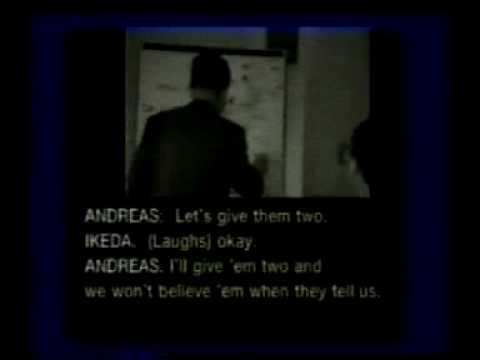
Archer Daniels Midland (USA), Ajinomoto (Japan), Koywa Hakko Kogyo (Japan), Sewon American Inc (South Korea) held secret meetings to fix the price of lysine, a food additive to animal feed in the 1990s.
Attempts to Sustain Collusion I

Archer Daniels Midland (USA), Ajinomoto (Japan), Koywa Hakko Kogyo (Japan), Sewon American Inc (South Korea) held secret meetings to fix the price of lysine, a food additive to animal feed in the 1990s.
An internal FBI informant brought the cartel down.
Attempts to Sustain Collusion II

1950s market for turbines (for electric utility companies)
A triopoly by market share:
- GE: 60%
- Westinghouse: 30%
- Allied-Chalmers: 10%
Maintained this equilibrium with clever coordination
Attempts to Sustain Collusion II

Utility companies solicit bids to build turbines:
If bid comes on day 1-17 on lunar calendar
- Westinghouse & A-C bid prohibitively high
- Ensures GE won
Attempts to Sustain Collusion II

Utility companies solicit bids to build turbines:
If bid comes on day 18-25 on lunar calendar
- GE & A-C bid prohibitively high
- Ensures Westinghouse won
Attempts to Sustain Collusion II

Utility companies solicit bids to build turbines:
If bid comes on day 26-28 on lunar calendar
- GE & Westinghouse bid prohibitively high
- Ensures Allied-Chalmers won
Attempts to Sustain Collusion II

Utility companies released their bids randomly, not according to lunar calendar
- Ensures the 60%-30%-10% distribution
Cheating by one of the 3 firms easily monitored by other 2
Nobody thought about the lunar calendar, until antitrust authorities caught on
Attempts to Sustain Collusion III

FCC Spectrum License auctions 1996-1997
Firm seeking a license in particular location (and willing to fight for it) signals to other firms via ending its bid in the telephone area code digits
- e.g. $50,100,202 for Washington DC (area code 202)
Other firms let it win (in exchange for tacit agreement to do the same)
Government-Sanctioned Cartels I
Like monopolies, some cartels exist because they are supported by governments or regulators, possibly by rent-seeking
National Recovery Administration (1933-1935)
- cartelized most industries to artificially raise prices of goods
- found unconstitutional in Schechter Poultry Corp. v. United States (1935)
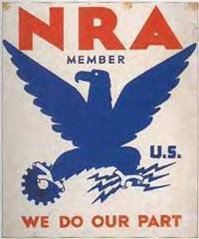
Government-Sanctioned Cartels II
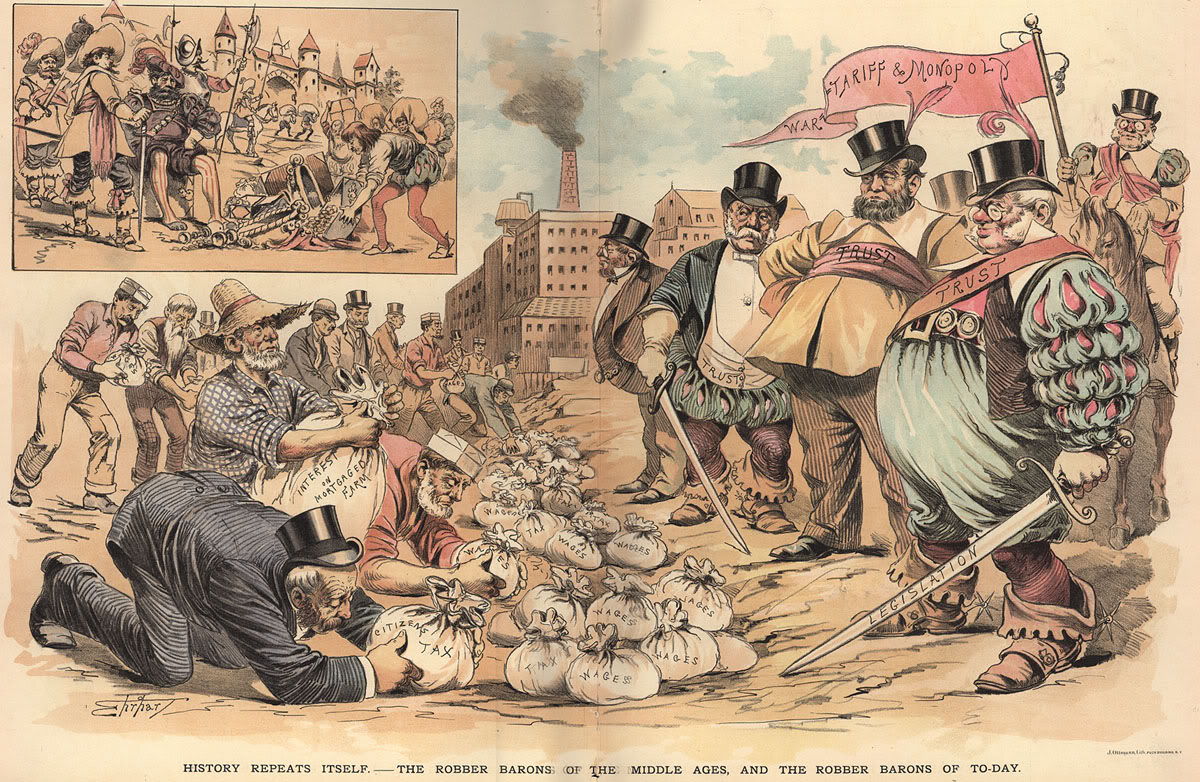
Government-Sanctioned Cartels II
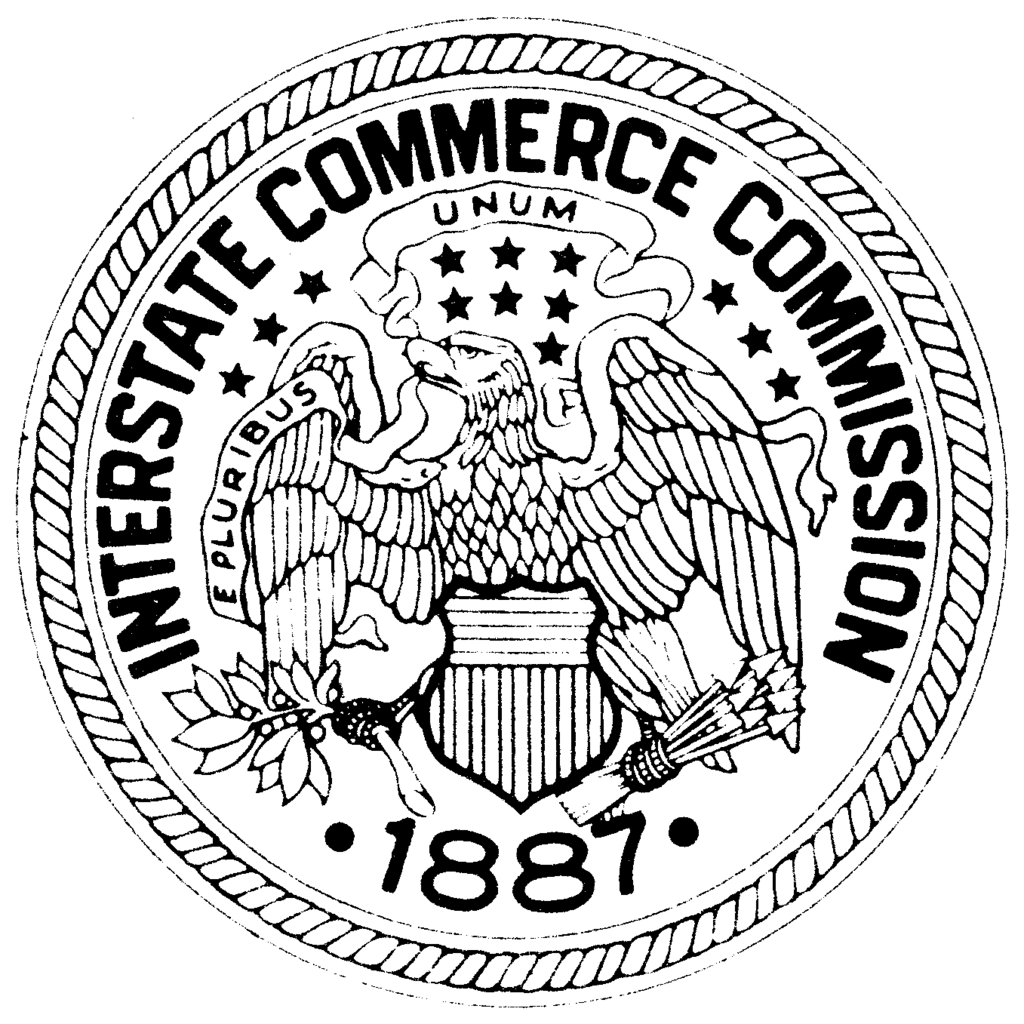
“[B]ecause of their inability to maintain their cartels [prior to the ICC], railroads were big supporters of the [Interstate Commerce Act] because the newly-formed ICC could coordinate cartel prices...Using the new law as authority, the railroads revamped their freight classification, raised rates, eliminated passes and fare reductions, and revised less than carload rates on all types of goods, including groceries.”
Kolko, Gabriel, 1963, The Triumph of Conservatism: A Reinterpretation of American History, 1900-1916
Government-Sanctioned Cartels III

Source: NPR Planet Money
“Marvin Horne was known as the raisin outlaw. His crime: Selling 100% of his raisin crop, against the wishes of the Raisin Administrative Committee, a group of farmers that regulates the national raisin supply. He took the case all the way to the Supreme Court, which issued its final ruling this week.”
Government-Sanctioned Cartels IV

